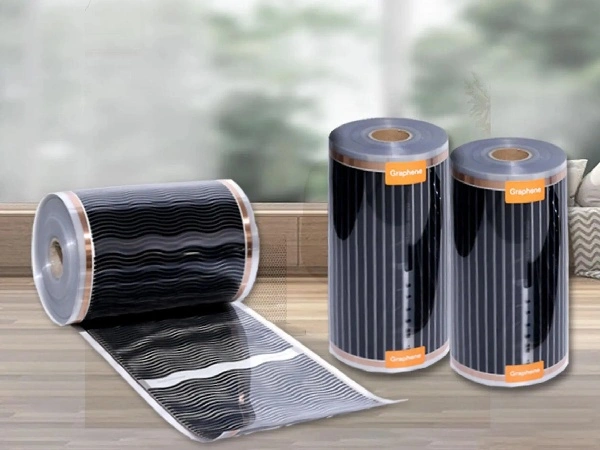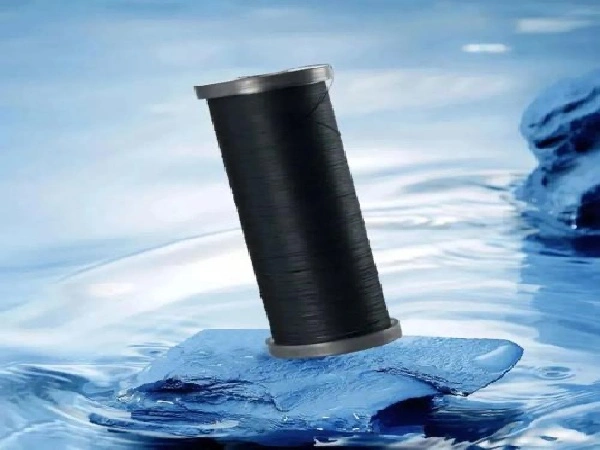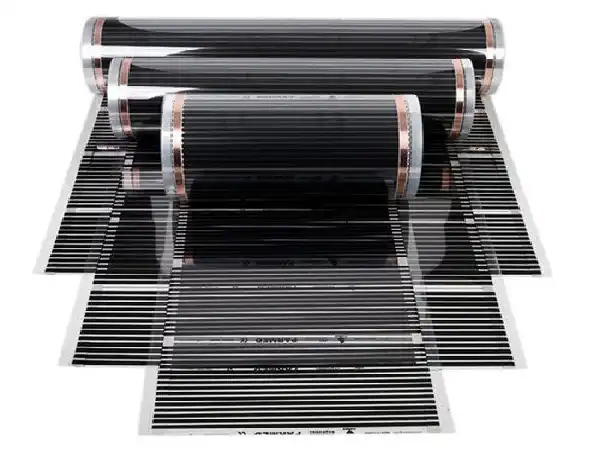How does graphene heating film work?
2025-08-14 17:29:54
Graphene, a single layer of carbon atoms arranged in a hexagonal lattice, has been applied in various industries since its isolation in 2004. Among its many applications, graphene heating films have emerged as a promising technology in thermal management, offering advantages over traditional heating elements, including high efficiency, uniform heating, and flexibility. As an enterprise that has independently developed "Holy Red" graphene electric heating film, Shengxihong has conducted in-depth explorations into its composition, the scientific principles underlying its heat generation, and the translation of these features into practical performance.
Structural Design of Graphene Heating Films
Graphene heating films are engineered as multi-layered structures, each component playing a critical role in ensuring efficient heat generation and safe operation.
Graphene Layer
The core component of a graphene heating film lies in its graphene layer, which serves as the primary heating element. Graphene used in these films is typically synthesized through methods like chemical vapor deposition (CVD) or liquid-phase exfoliation, resulting in thin, flexible sheets of interconnected graphene nanosheets. These nanosheets form a conductive network that allows electrons to flow freely, a property derived from graphene’s exceptional electrical conductivity, approximately 10⁶ S/m, far exceeding that of most metals.
Basal Substrate
Supporting the graphene layer is a basal substrate, usually made of insulating materials such as polyethylene terephthalate (PET), polyimide (PI), or glass fiber. This substrate provides mechanical stability, preventing the fragile graphene layer from tearing while ensuring electrical insulation to avoid short circuits. The choice of substrate depends on the application: PET is preferred for low-temperature uses (up to 80°C) due to its cost-effectiveness and flexibility, while PI is used in high-temperature scenarios (up to 200°C) for its heat resistance.
Conductive Electrodes
Flanking the graphene layer are conductive electrodes, often made of copper or silver, which supply electrical current to the graphene network. These electrodes are designed in a busbar pattern, parallel strips along the edges of the film, to ensure uniform current distribution across the entire graphene layer. Uneven electrode design can lead to hotspots, reducing efficiency and lifespan. Additionally, a protective top layer (e.g., transparent polyurethane or silicone) is often added to shield the film from moisture, dust, and physical damage, making it suitable for harsh environments like bathrooms or outdoor settings.
The structural integration of graphene heating film is precise: the graphene layer must be uniformly deposited on the substrate to avoid gaps in the conductive network, and the electrodes must make intimate contact with the graphene to minimize contact resistance. Modern manufacturing techniques, such as roll-to-roll printing, enable large-scale production of these films with consistent quality, ensuring that each unit maintains the same heating performance.
With a clear understanding of its composition, the next critical aspect is unraveling how these components work together to convert electrical energy into heat efficiently.

Electrothermal Conversion Mechanism
The function of a graphene heating film, converting electrical energy into thermal energy, relies on the principle of Joule heating, also referred to as resistive heating. When an electric current passes through a conductive material, the electrons in the material collide with the atoms of the lattice structure, transferring kinetic energy to the atoms and increasing their vibrational motion. This increased vibration manifests as heat, which is then radiated or conducted outward from the material.
①Structure
Graphene's structure amplifies the efficiency of this process. In graphene, each carbon atom is bonded to three neighboring atoms in a planar hexagonal arrangement, leaving one valence electron free to move through the lattice. These delocalized electrons exhibit high mobility (up to 200,000 cm²/V·s at room temperature), meaning they can flow with minimal resistance compared to electrons in metals like copper (≈40,000 cm²/V·s). Lower resistance reduces energy loss as waste heat during electron flow, allowing a higher proportion of electrical energy to be converted into usable heat. Graphene heating films typically achieve energy conversion efficiencies of 90% or higher, compared to 60-70% for traditional resistive wires.
②Uniformity of Heat Distribution
Another key factor is the uniformity of heat distribution. The interconnected network of graphene nanosheets ensures that current flows evenly across the entire film. Unlike traditional heating elements (e.g., nichrome wires), which concentrate heat along the wire and create uneven temperature gradients, graphene's two-dimensional structure spreads the current across a large surface area. This uniformity is enhanced by the high thermal conductivity of graphene (≈5000 W/m·K), which allows heat to dissipate rapidly from points of generation to adjacent areas, preventing hotspots. Phonons, quanta of vibrational energy, play a crucial role here: the strong carbon-carbon bonds in graphene enable efficient phonon transport, ensuring that heat spreads quickly and uniformly across the film.
③Response Time
The response time of graphene films is also notable. Due to the low mass of the graphene layer and its high thermal conductivity, the film reaches its target temperature within seconds of being powered on. This rapid heating is a result of the direct conversion of electrical energy to heat without the need for intermediate energy storage, unlike some heating systems that rely on heating a large mass (e.g., oil-filled radiators). For example, a typical graphene film used in home heating can reach 50°C within 10-15 seconds, compared to 2-3 minutes for a traditional electric heater.
④Temperature Regulation
Temperature regulation is another critical aspect of the mechanism. Many graphene heating films are integrated with temperature sensors and controllers that adjust the current flow based on the desired temperature. When the film reaches the set temperature, the controller reduces or cuts off the current, preventing overheating. This not only enhances safety but also optimizes energy usage, as the film only consumes power when necessary.
Having explored the science behind heat generation, it is important to examine how these mechanisms translate into real-world performance and why graphene heating films are gaining traction in various applications.

Practical Performance and Advantages in Applications
The unique combination of structural design and electrothermal properties gives graphene heating films a set of performance advantages that make them superior to traditional heating technologies in many scenarios. These advantages are most evident in their practical applications, spanning residential, automotive, medical, and industrial sectors.
①Residential Heating
One of the most notable benefits is uniform heating. In residential heating, for instance, graphene films installed under flooring or wallpaper distribute heat evenly across the room, eliminating cold spots common with radiators or forced-air systems. This uniformity not only improves comfort but also reduces energy waste, as the entire space reaches the desired temperature without overheating specific areas. Studies have shown that rooms heated with graphene films require 15-20% less energy to maintain a consistent temperature compared to conventional systems, primarily due to this even heat distribution.
②Automotive Applications
Energy efficiency is another key advantage. As mentioned earlier, graphene's high electrical conductivity minimizes resistive losses, ensuring that most of the input energy is converted into heat. In automotive applications, this efficiency is critical: graphene films used for seat heating or windshield defogging consume less power from the vehicle's battery, extending electric vehicle range. For example, a graphene-based seat heater uses approximately 10-15W per seat, compared to 20-30W for traditional wire-based heaters, reducing the load on the battery by up to 50%.
③Medical Devices
The flexibility and thinness of graphene heating films expand their application scope. Unlike rigid heating elements (e.g., ceramic heaters), graphene films can be bent, rolled, or cut into custom shapes, making them suitable for curved surfaces like car dashboards or irregularly shaped medical devices. In wearable technology, for example, flexible graphene films integrated into gloves or jackets provide targeted heat without restricting movement, a feature impossible with bulkier traditional heaters.
Rapid response time enhances usability in time-sensitive applications. In medical settings, graphene films used for hot compress therapy can reach the required temperature (40-45°C) within seconds, allowing healthcare providers to adjust treatment quickly based on patient feedback. Similarly, in industrial processes requiring precise temperature control, such as drying thin films or curing adhesives, graphene heaters can modulate heat output in real time, improving process efficiency and product quality.
Durability and longevity are also significant. The protective layers and robust substrate materials ensure that graphene films can withstand repeated bending, temperature cycles, and exposure to moisture. In tests, high-quality graphene films have demonstrated a lifespan of over 100,000 hours of continuous operation, equivalent to more than 11 years of use, far exceeding the 10,000-30,000 hours typical of nichrome wire heaters. This longevity reduces maintenance costs, making them cost-effective over the long term despite higher initial investment.
While challenges such as production costs (due to high-quality graphene synthesis) and scalability remain, ongoing advancements in manufacturing, such as the development of lower-cost exfoliation methods and roll-to-roll production, are steadily addressing these issues. As a result, graphene heating films are becoming increasingly accessible, with market growth projections estimating a compound annual growth rate of 25-30% over the next decade.
Shaanxi Shengxihong Science and Technology Co., Ltd. is committed to advancing the application of graphene-based technologies through continuous innovation and high-quality production. With a comprehensive portfolio that includes electric heating films, wearable graphene devices, and physiotherapy products, the company provides reliable solutions for diverse industry needs. Backed by 17 utility model patents and over 30 honors, Shengxihong stands as a trusted partner in the field of functional materials and smart heating. For cooperation opportunities, product inquiries, or further information, please contact us at 1315363763@qq.com.

References
- Novoselov, K. S., Geim, A. K., Morozov, S. V., Jiang, D., Zhang, Y., Dubonos, S. V., Grigorieva, I. V., & Firsov, A. A. (2004). Electric field effect in atomically thin carbon films. Science, 306(5696), 666-669.
- Balandin, A. A., Ghosh, S., Bao, W., Calizo, I., Teweldebrhan, D., Miao, F., & Lau, C. N. (2008). Superior thermal conductivity of single-layer graphene. Nano Letters, 8(3), 902-907.
- Zhang, X., Li, Z., & Wang, C. (2016). Graphene-based flexible heating films: Preparation, properties, and applications. Journal of Materials Chemistry C, 4(38), 8907-8924.
- Li, M., Liu, Z., & Chen, J. (2019). Joule heating in graphene: Fundamentals and applications. Advanced Functional Materials, 29(22), 1808296.
- Wang, H., Zhang, L., & Zhao, X. (2021). Recent progress in graphene-based heating materials: Structure, properties, and applications. Chemical Engineering Journal, 416, 129056.
- Smith, R. J., & Johnson, L. M. (2020). Energy efficiency analysis of graphene heating films in residential buildings. Renewable and Sustainable Energy Reviews, 123, 109792.
